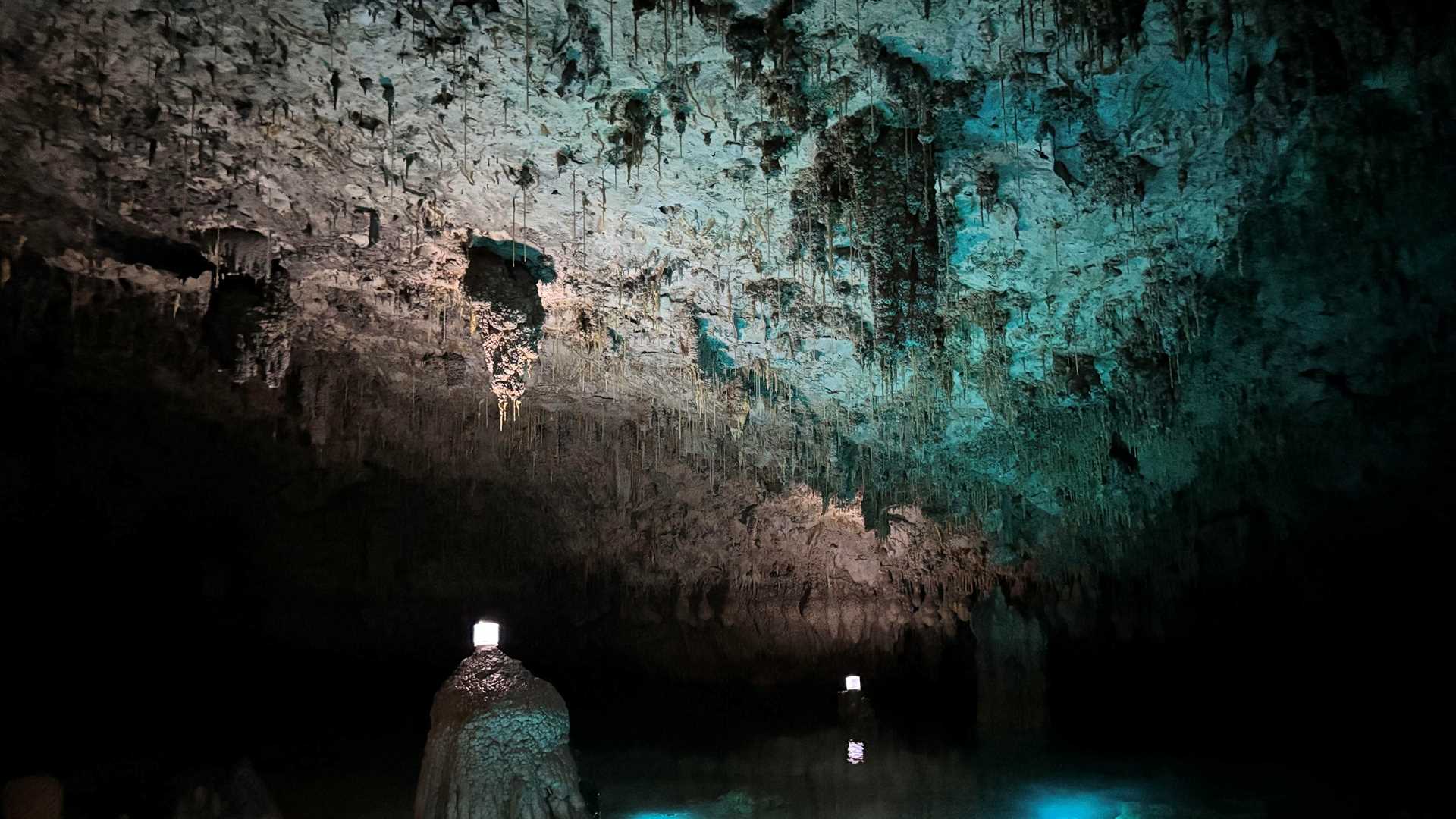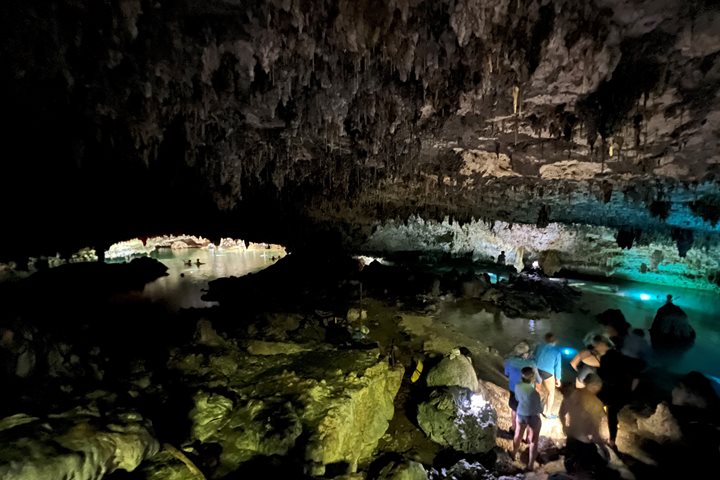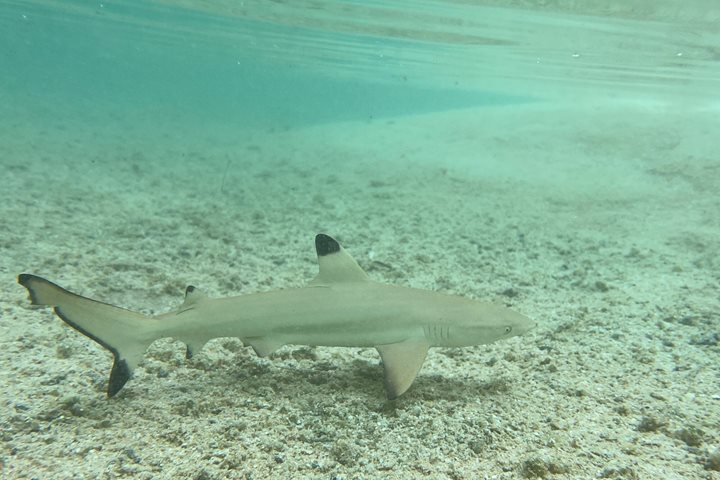National Geographic Orion arrived at the limestone cliffs of Makatea just as the sun lit the sky with pink and golden hues. Makatea is a raised coral atoll whose cliffs raise vertically out of the ocean to heights of over 260 feet. From 1917 to 1964, its large deposits of phosphates were mined by hand and shipped overseas. Today a few families still reside on the island to run the school, bakery, and first aid clinic. Tourism and coconut crab hunting are now the main sources of income for Makatea’s residents.
Guests explored the island by foot and local trucks to see the lush island and some of its rare wildlife, like the Makatea fruit dove, as they made their way to the ‘grotto’. The grotto is a large underground cavern formed by porous limestone that has a ceiling full of stalactites. It is the same depth as the freshwater table, so locals use the area as a swimming hole and invited guests to explore the cave network by spelunking and snorkeling. Underwater wildlife including freshwater eels, shrimp, and crabs could be spotted amongst the stalagmites as guests snorkeled through the cave.
Once back on National Geographic Orion, our cultural specialist, Kura, taught guests about how Polynesian cultures use coconuts throughout the islands and gave a demonstration that made the preparations look effortless. Kura then graced us with her beautiful singing voice and guitar playing as she performed for us in the lounge at cocktail hour.







